Is a memory foam mattress right for you? We break down the pros and cons
Thinking of buying a memory foam mattress? Here are the advantages and drawbacks you need to know
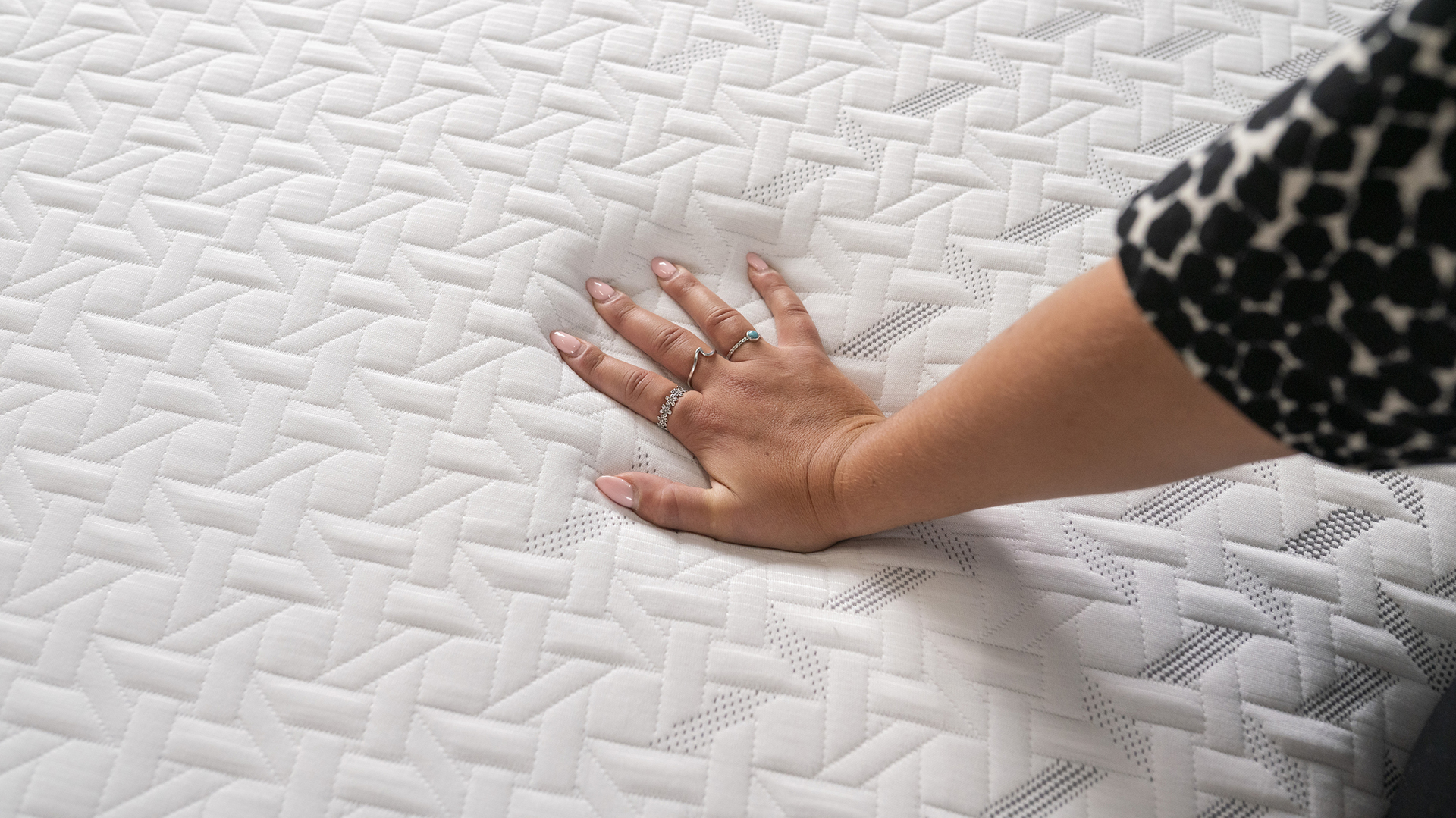
If you're considering buying a memory foam mattress, we've tested all the latest to find this year's best mattresses, and we can help you decide if this is the right mattress for you by delving deep into the pros and cons of memory foam.
The best memory foam mattresses use quality memory foam — a plush, slow moving, durable material that moulds to your body shape to provide pressure relief and cushioning. The classic memory foam feel is characterized by a plush, sink-in comfort akin to getting a hug from your bed. But looking for a new bed means considering everything you need, from support and comfort, to temperature regulation, durability, and much more.
So, before you dive into our mattress sales to choose your new bed, we'll take you through the advantages and disadvantages of memory foam, to help you decide if this popular material is best for you.
Pros of memory foam mattresses
1. Memory foam provides excellent pressure relief
Originally developed by NASA in the 1960s as a shock-absorbing material that can relieve pressure for pilots, memory foam (also known as polyurethane viscoelastic foam) is a dense material that can mold to the shape of whatever presses against it and then bounce back to its original form when that pressure is removed.
This ability to contour to the body and evenly distribute weight makes memory foam perfect for mattresses, as it cradles the touch points to provide great pressure relief for areas that need it — like the shoulders, knees and hips.
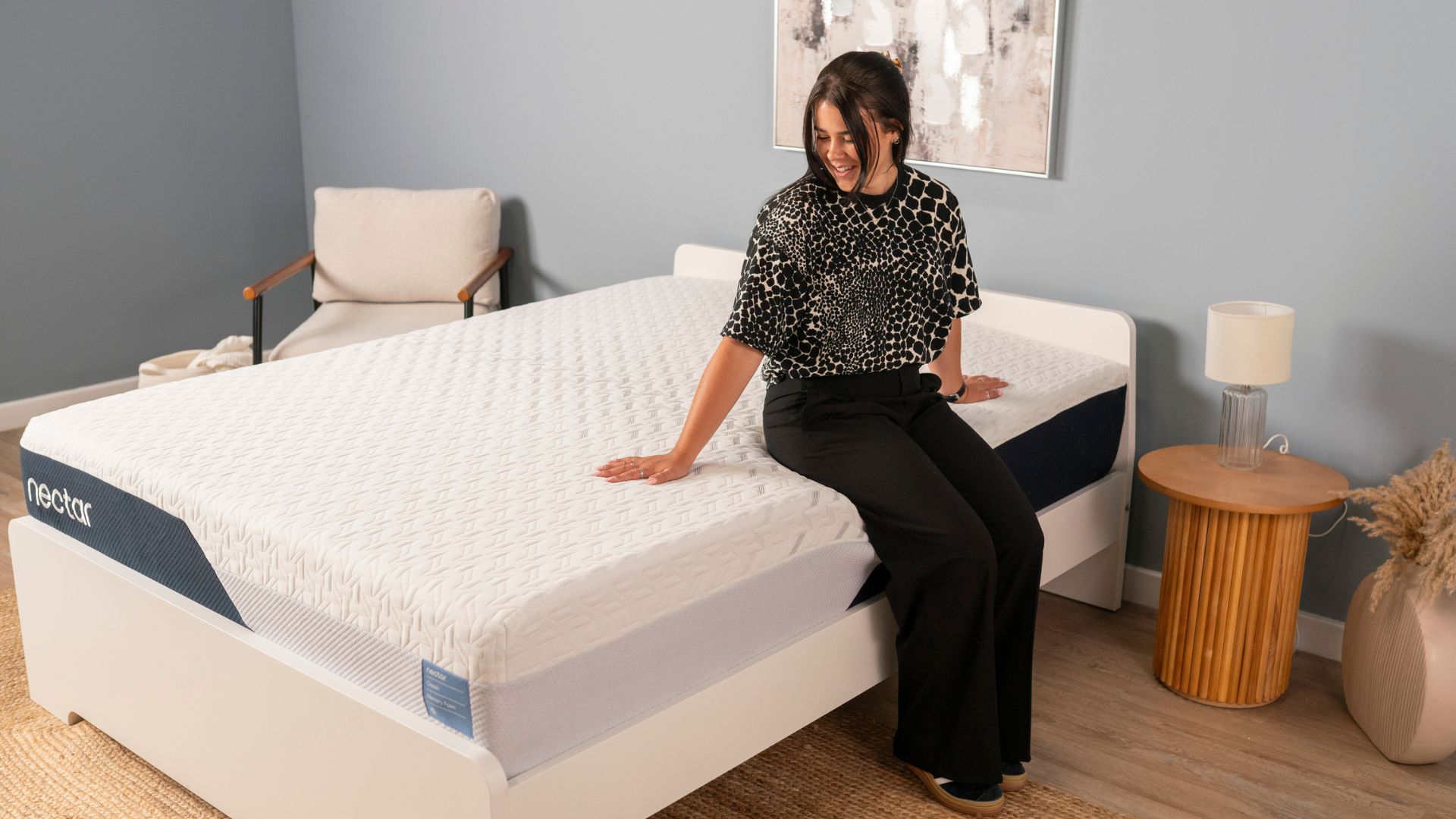
As such, memory foam mattresses are often among the best mattresses for side sleepers we've tested. However, memory foam mattresses can suit back, stomach and combination sleepers too — particularly if they use firmer foams.
2. It excels at motion isolation
If you're a bed sharer who is often woken by your partner tossing and turning, memory foam can help you sleep through the night. Its ability to slowly return to its original shape means memory foam excels at absorbing movement. Slow is the key word here — if one person moves in bed, the memory foam dampens that movement before it transfers across the surface.
When we're reviewing the best mattresses for couples, we test motion isolation using both hands-on experience and a subjective drop test: we drop a weight onto the mattress at certain distances from a wine glass and measure how much the glass wobbles. Less wobble equals better motion isolation. This is an area memory foam mattresses typically perform well. For context, in our Nectar Classic Memory Foam mattress review, this bed scored 5 out of 5 for motion isolation.
3. Memory foam contours to your body
Memory foam is an adaptive material, which means that when you apply the heat and weight of your body to its surface, it will mold to your shape. That feel of sinking into the mattress is what creates the comforting 'hug' sensation memory foam is known for.
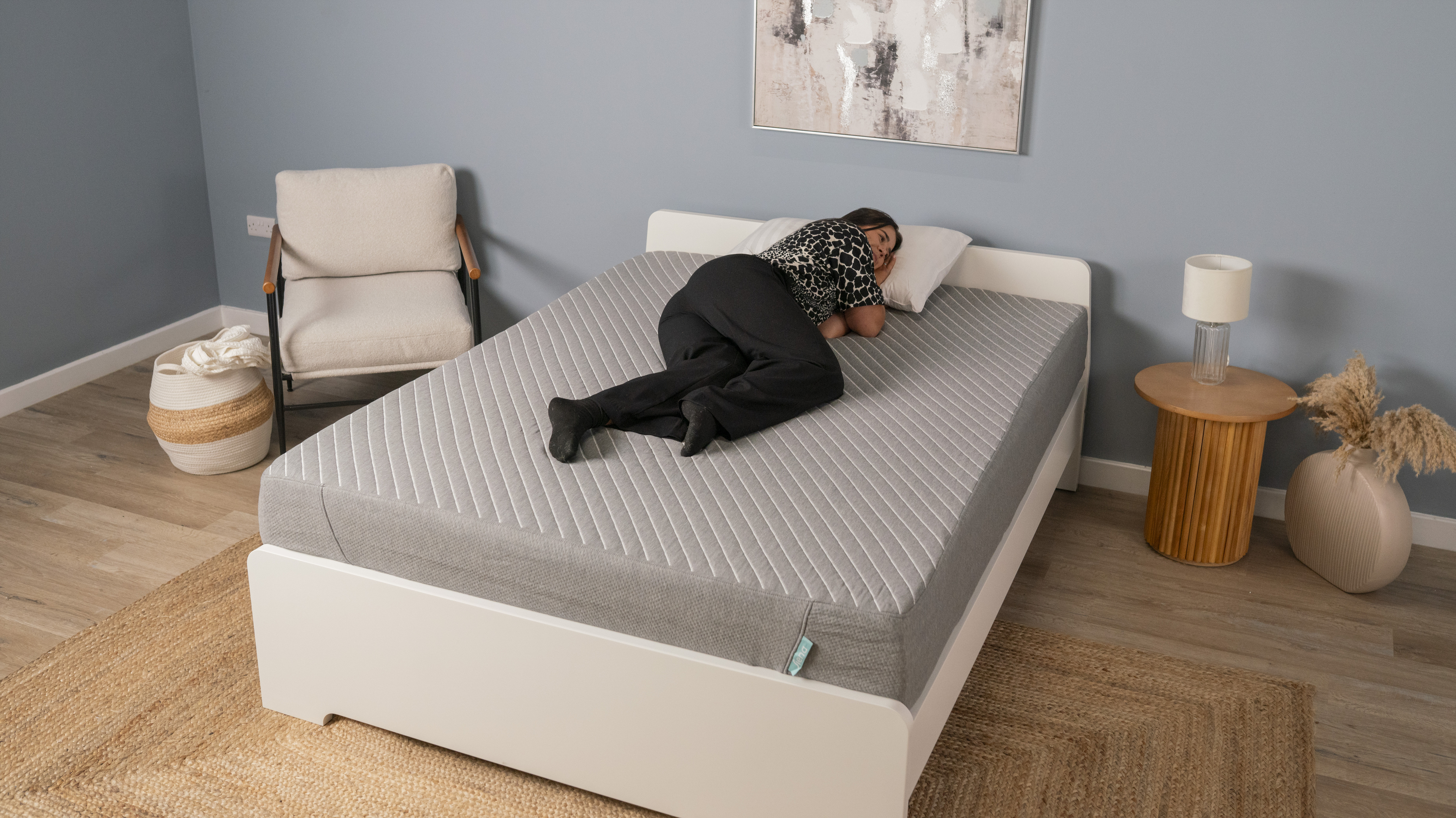
Memory foam mattresses are fantastic for sleepers who like to be held by the bed. This adaptive effect can give personalized support to help reduce the risk of waking up with lower back pain or joint pain. Plus, this hug is a cozy feel that some find soothing.
However, your memory foam mattress does need to provide support beneath the comfort foams. You don't want to sink so far into the bed you come out the other side.
4. It's generally very durable
Memory foam mattresses tend to be more durable than traditional spring or hybrid mattresses due to the dense structure of the foam. Coils, even those found in the best hybrid mattresses, will weaken and wear down with frequent use, leading to a sagging, squeaking mattress.
A memory foam mattress should last anywhere between six and 10 years, however, the longevity of your bed does depend on a few factors. The specific density of the memory foam in your mattress is one, since denser foams are more durable. Environmental factors can also have an impact: avoid getting a memory foam mattress wet or too warm.
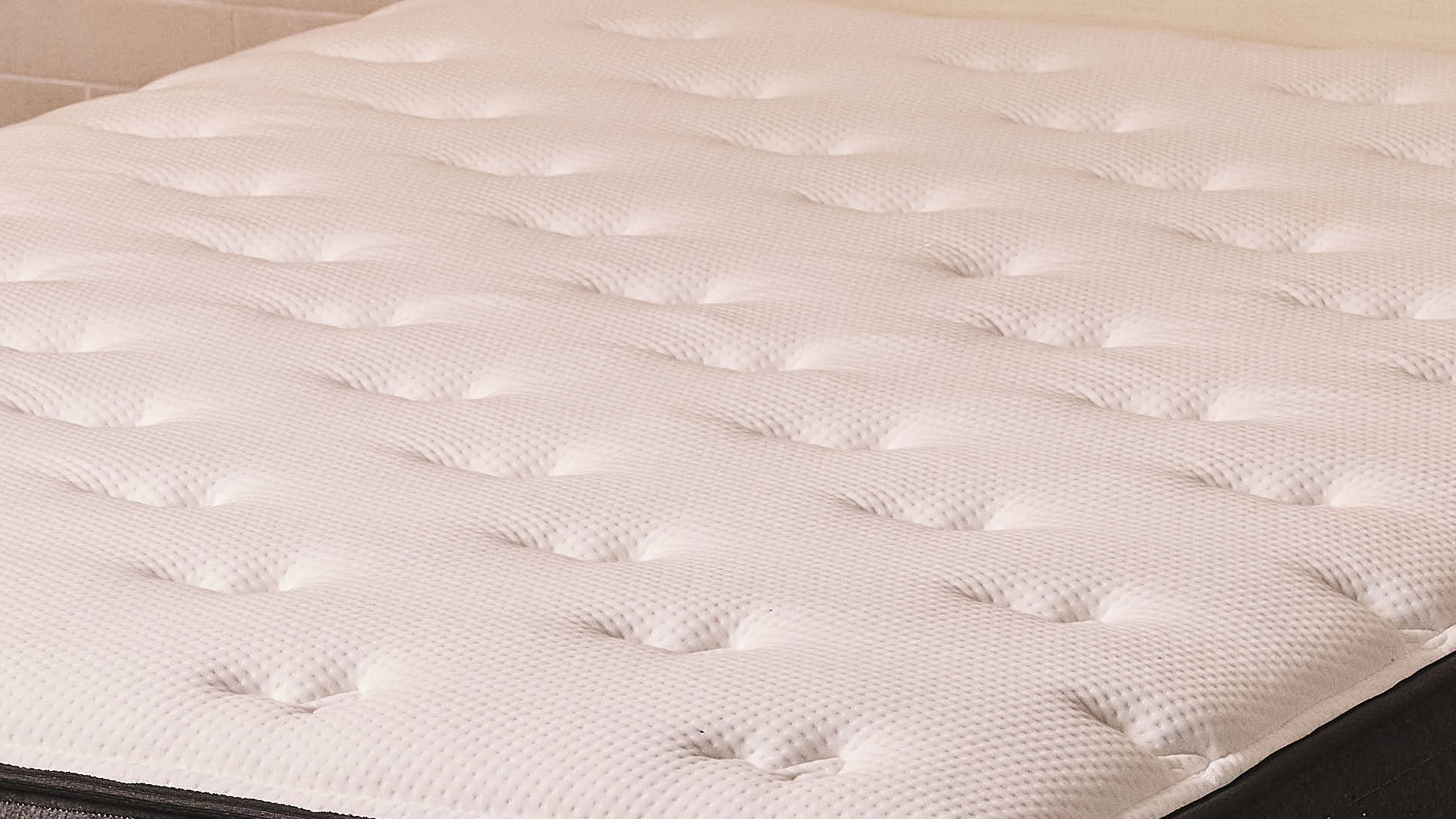
There are simple steps you can take to ensure a good lifespan for your memory foam mattress. Keeping the mattress clean, regularly rotating it and using the right bed base can all increase longevity.
5. It's a good choice for those with allergies
Memory foam mattresses are a great choice for those who experience allergies, as most memory foams are hypoallergenic. Some top-rated memory foam mattresses, like the Nectar Classic, even have covers with an antimicrobial treatment to increase their ability to protect you against allergens.
In addition, memory foam is naturally resistant to dust mites. Mattresses with springs have open space where allergens can accumulate, but the dense structure of memory foam makes it more difficult for common allergens like dust and pet dander to build-up. As such, those pesky dust mites can't penetrate and fester.
Still, it's important to clean your memory foam mattress on a regular basis, including vacuuming your mattress at least once a week to remove any build-up of dead skin cells, sweat, body oils, dust and dander. And it's always worth investing in one of the best mattress protectors, for an extra layer of protection.
Cons of a memory foam mattress
1. Memory foam typically traps heat
The dense structure that makes memory foam durable and so great at minimizing motion transfer also has a downside. Thick foams can retain heat, which means a memory foam mattress isn't necessarily ideal for hot sleepers.
Hybrid and innerspring mattresses have coils that allow air to pass through and cool down, but memory foam's density doesn't give room for that same level of air circulation. The contouring nature of the foam also means that your body is more likely to trap warmth between you and the mattress.

That said, memory foam has evolved throughout the years and many brands have adapted their memory foam mattresses for better temperature regulation. For example, in our Cocoon by Sealy Chill mattress review we found this all-foam bed sleeps cool thanks to its phase change material cover.
But even with cooling tech, most memory foam beds aren't going to rival the best cooling mattresses. If you are an exceptionally hot sleeper, consider one of those instead.
2. It's prone to off-gassing
Many of the best mattresses in a box are memory foam, as this material is easy to compress and roll. When you unbox the mattress, the memory foam will gradually spring back into shape. But there might be an unwelcome side effect...
Unboxing any mattress comes with off-gassing. This is the term used to describe the smell when volatile organic compounds (VOCs) from the synthetic materials in the mattress are released. Foams are prone to off-gassing, with cheaper foams often smellier due to their lower quality construction.
While it usually dissipates within a few hours and it isn't dangerous, off-gassing can be overwhelming, especially if you’re sensitive to smell or have respiratory problems.
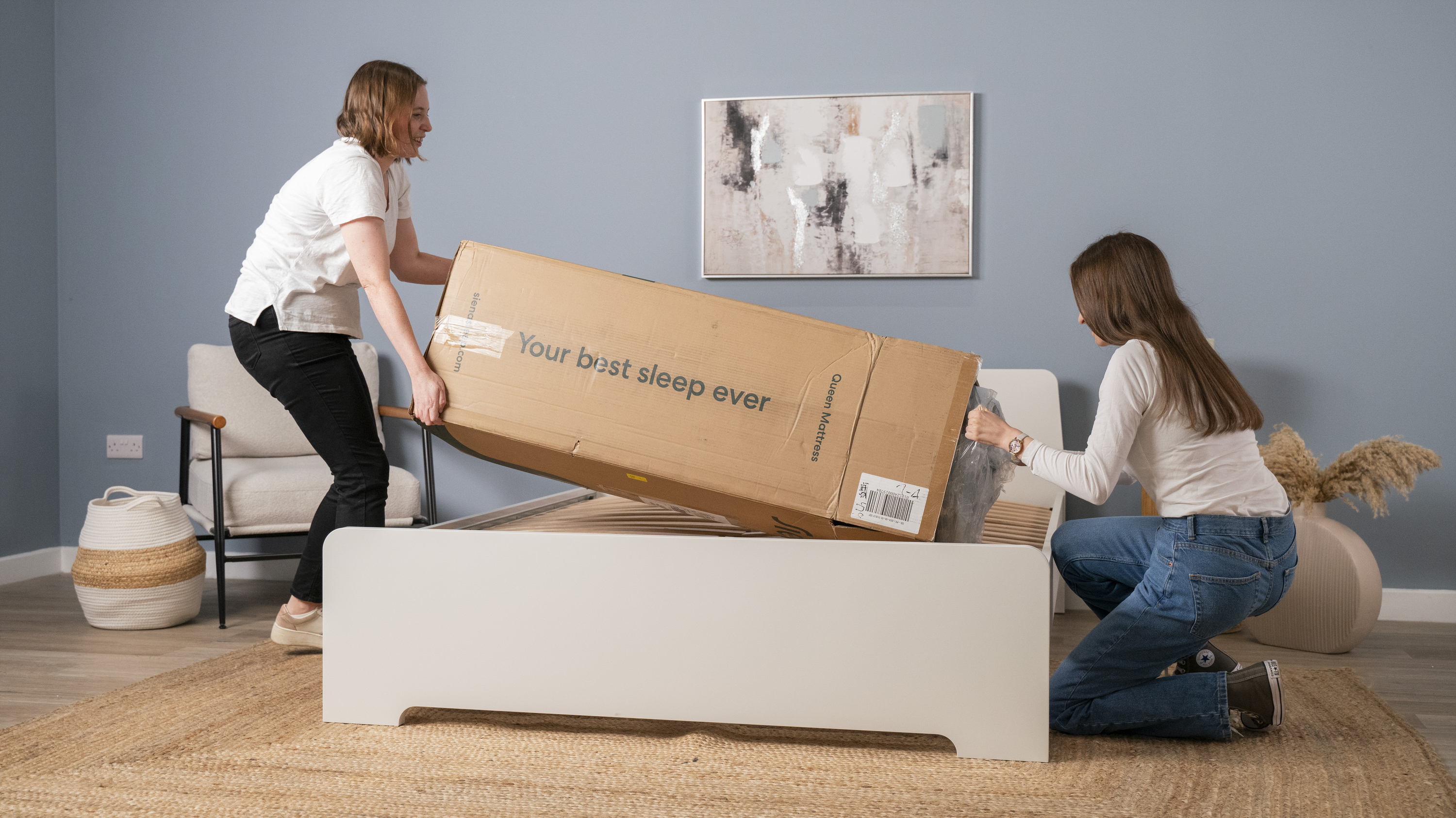
If you do have a sensitive nose, we recommend picking a mattress with certifications such as CertiPUR-US, GREENGUARD Gold, OKEO-TEX and eco-INSTITUT, which means your bed is free from any toxic chemicals and less likely to off-gas. And open a window when it's time to unbox.
3. Memory foam mattresses have weaker edge support
If you want to sleep right up to the edge of your bed or use its sides to help you get in and out, memory foam mattresses can prove problematic. They typically lack strong edge support because of the cushioning properties of the foam.
While hybrid or innerspring mattresses use coils for firmness and stability — often including a stronger coil perimeter for additional support — it's trickier to create a supportive edge with foam. You might notice that when you sit on the edge, you sink deep into the mattress. This is more noticeable with cheaper all-foam beds.
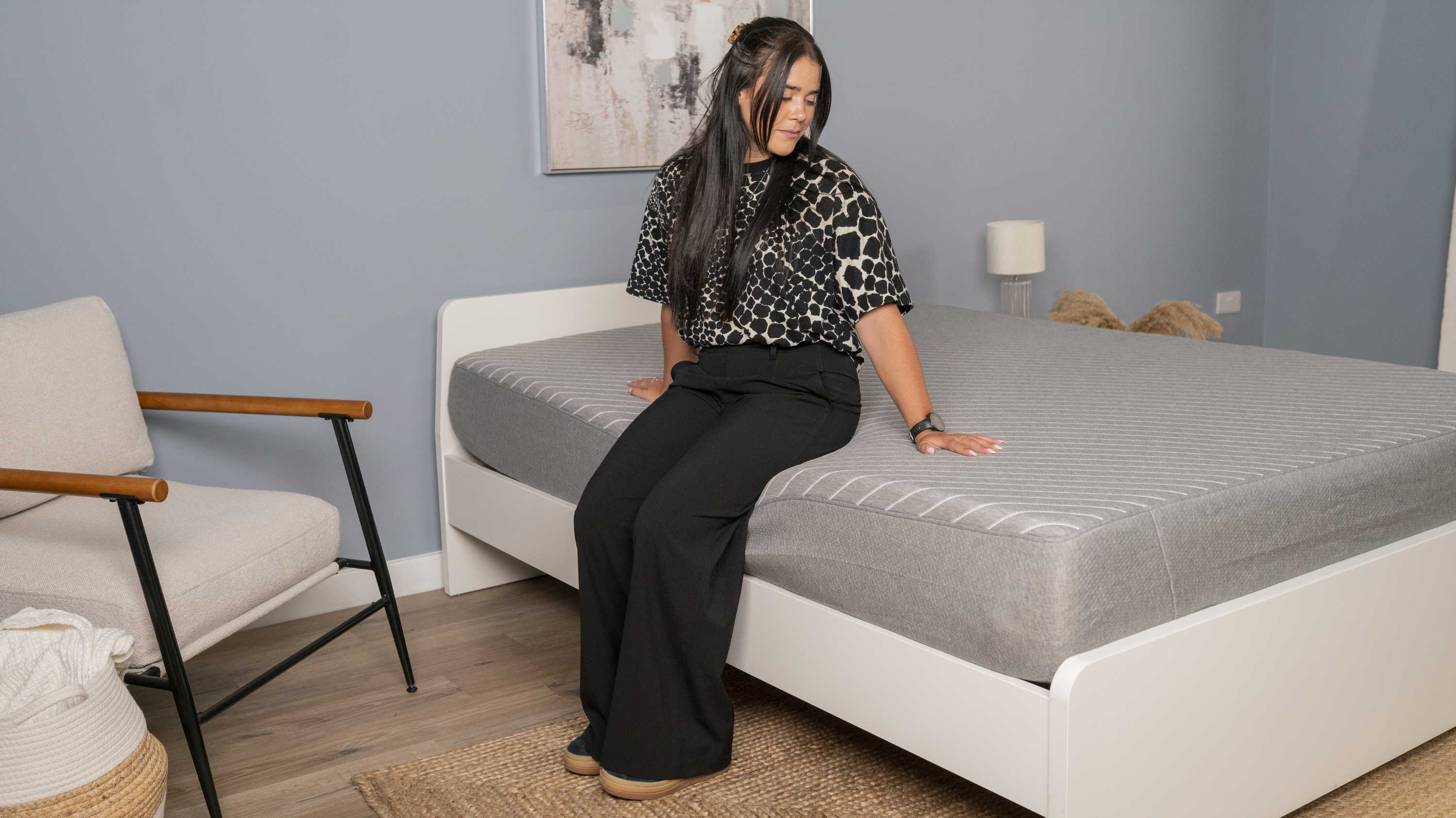
However, poor edge support isn't a given for memory foam mattresses. In our Siena Memory Foam Mattress review, we noted this affordable all-foam bed is strong at the edges, keeping us supported no matter how close we sleep to the sides.
4. It can have too much sink for some sleep styles
While memory foam mattresses generally offer the right kind of pressure relief for side sleepers, those who prefer sleeping on their back or stomach may find they don't get firm support they need.
Stomach sleepers and back sleepers need sturdy support at the lower back and hips, to keep the lumbar region from sinking too deeply into the mattress. On a softer memory foam bed, you might find your spine is uncomfortably out of alignment. However, there are firmer memory foam mattresses out there, like the Plank Firm. In our Plank Firm mattress review we rated this firm all-foam design among the best mattresses for stomach sleepers.
Finally, memory foam beds are rarely among the best mattresses for heavy people, as the more pressure applied to the foam, the more the foam sags. If you weight over 250lbs and want an all-foam mattress, make sure it has an enhanced weight capacity.
5. Memory foam needs an adjustment period
Getting a new bed is exciting, and you're probably dreaming of good sleep from night one. But there's always an adjustment period for a mattress, and with a memory foam mattress, it might take several weeks to get used to your new bed.
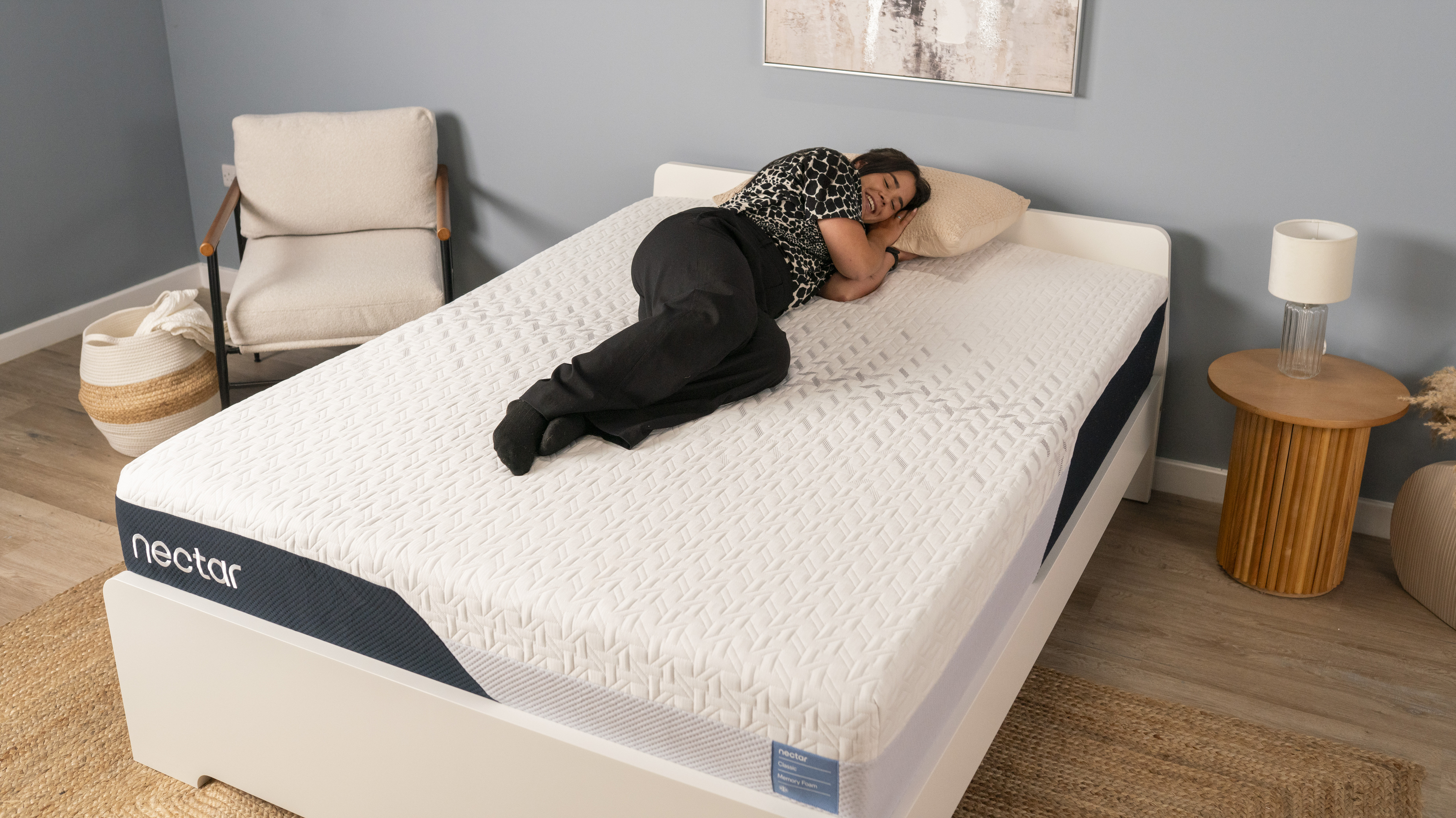
Memory foam can often feel firmer than expected when you first unpack, as the foam will gradually soften over time as it reacts to body heat, pressure and your specific body shape.
And if you’re used to sleeping on a hybrid or innerspring mattress with a bouncy, responsive feel, then memory foam can take some time to adapt to. This is why it’s important to always choose a mattress that has a good sleep trial, so that you have plenty of time to get used to the new feel of memory foam.
Sign up to get the BEST of Tom's Guide direct to your inbox.
Get instant access to breaking news, the hottest reviews, great deals and helpful tips.

Rachael is a freelance journalist based in South Wales who writes about lifestyle, travel, home and technology. She also reviews a variety of products for various publications including Tom’s Guide, CreativeBloq, IdealHome and Woman&Home. When she’s not writing and reviewing products she can be found walking her Sealyham and West Highland terrier dogs or catching up on some cringe-worthy reality tv.
You must confirm your public display name before commenting
Please logout and then login again, you will then be prompted to enter your display name.
